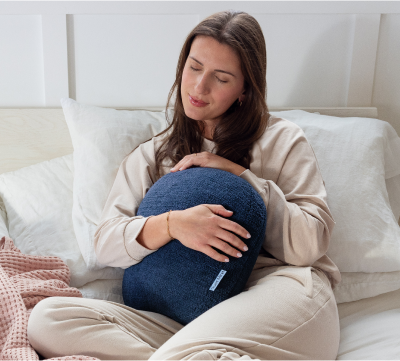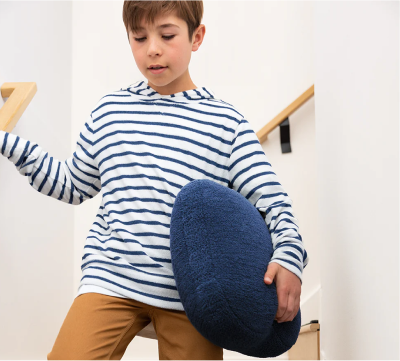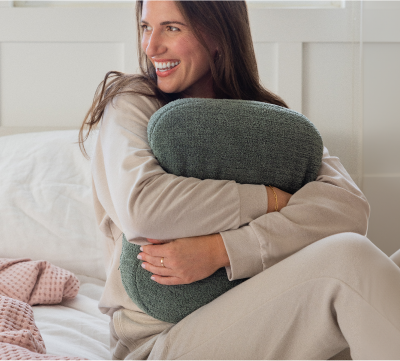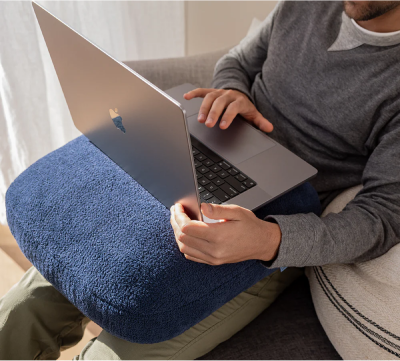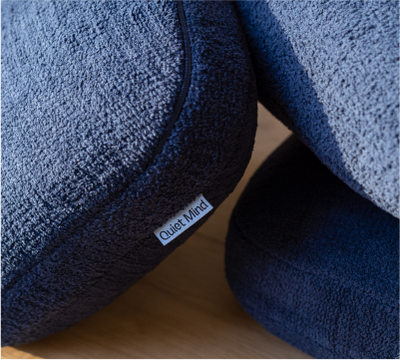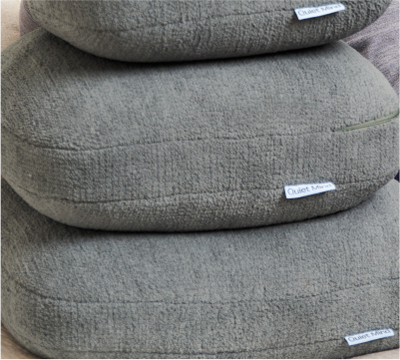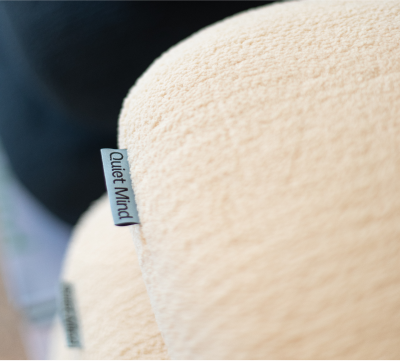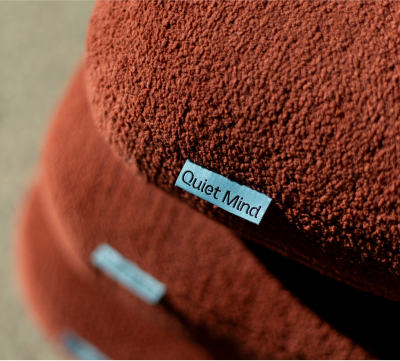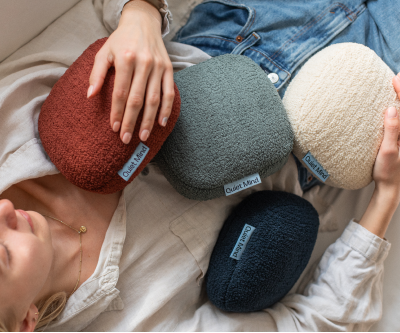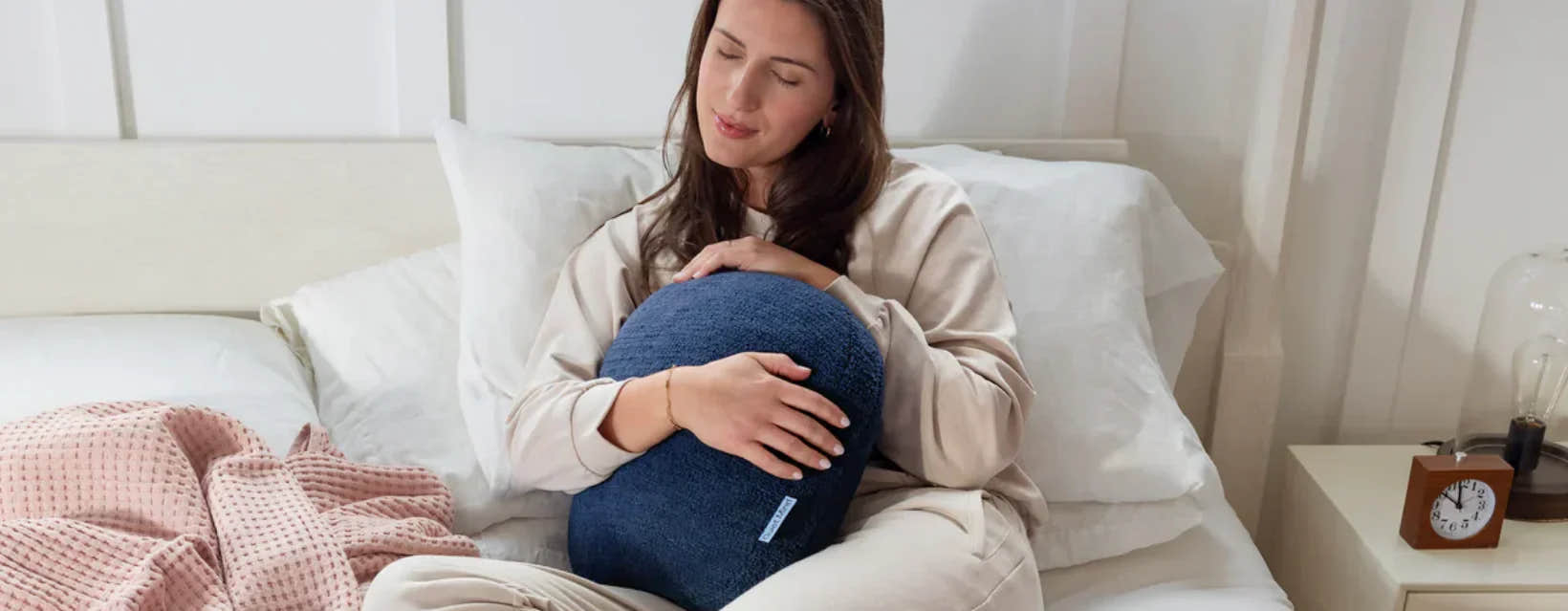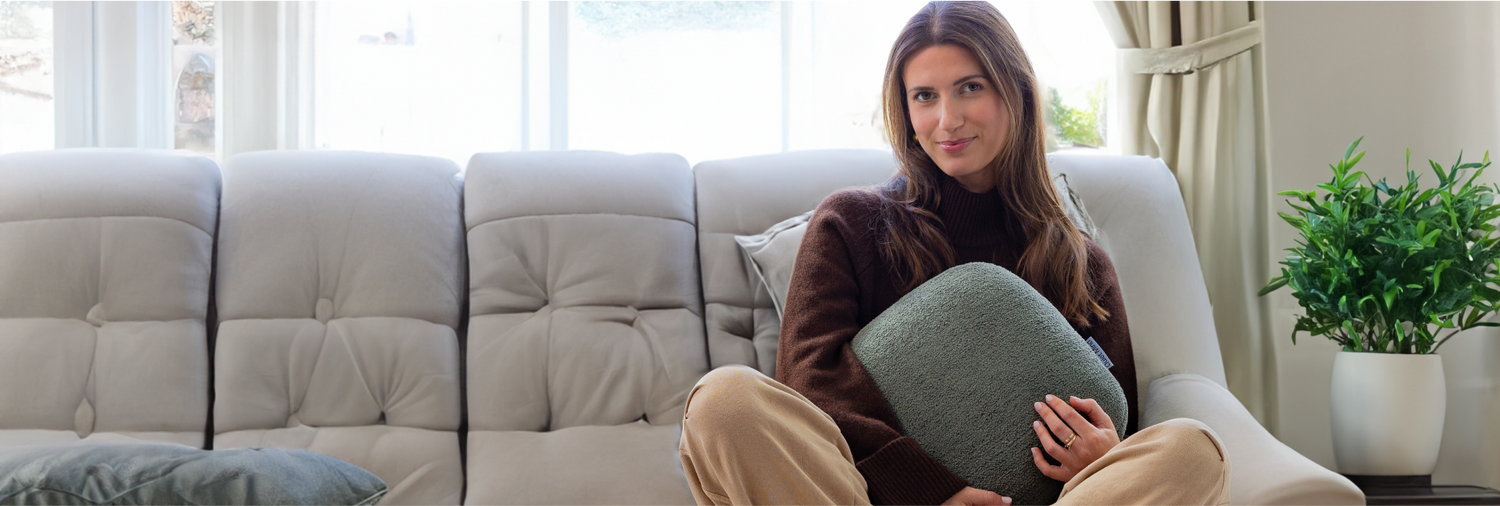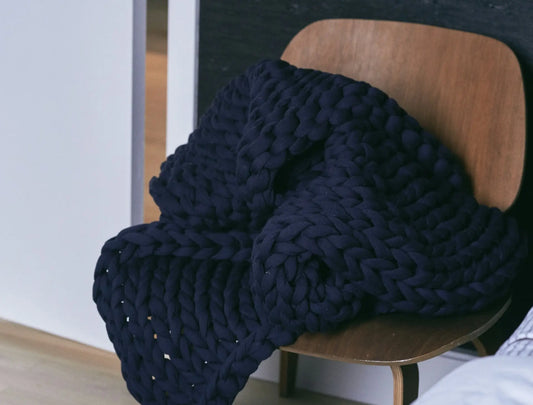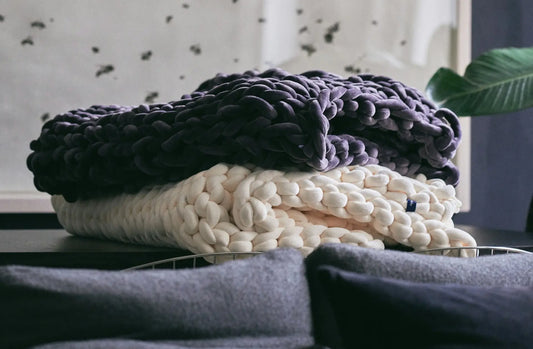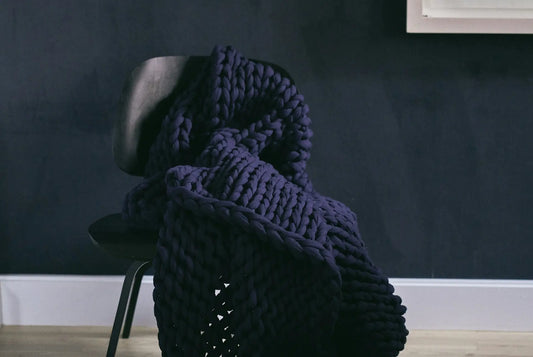The Psychology Behind Hugging A Pillow While Sleeping
For many of us, our fast-paced modern lifestyle can leave us feeling restless and anxious, longing for a good night’s sleep. Finding rest and tranquility is often much more challenging than it should be, whether due to the weight of responsibilities, the pressures of modern society, or simply an overactive mind.
If you’ve ever sought comfort from hugging a stuffed animal as a child or a pillow as an adult, you are not alone. Beyond its benefits for supporting your head and neck while you sleep, the right pillow can be invaluable in your pursuit of physical comfort, emotional balance, and better quality sleep.
It turns out your pillow isn’t just a place to rest your head. It can provide feelings of warmth, security, and even be a subconscious reminder that you’re not all alone. Let’s explore the potential benefits of hugging a pillow while sleeping and how this common practice can promote deep, nurturing relaxation and cultivate a calmer mind.

Is It Normal To Hug A Pillow While Sleeping?
Absolutely! Many people hug their pillow throughout the night and while they’re falling asleep. Holding a pillow during sleep helps you feel more relaxed and cozy, and even reduces feelings of loneliness. Although it may seem inconsequential, there’s actually a lot of science behind it.
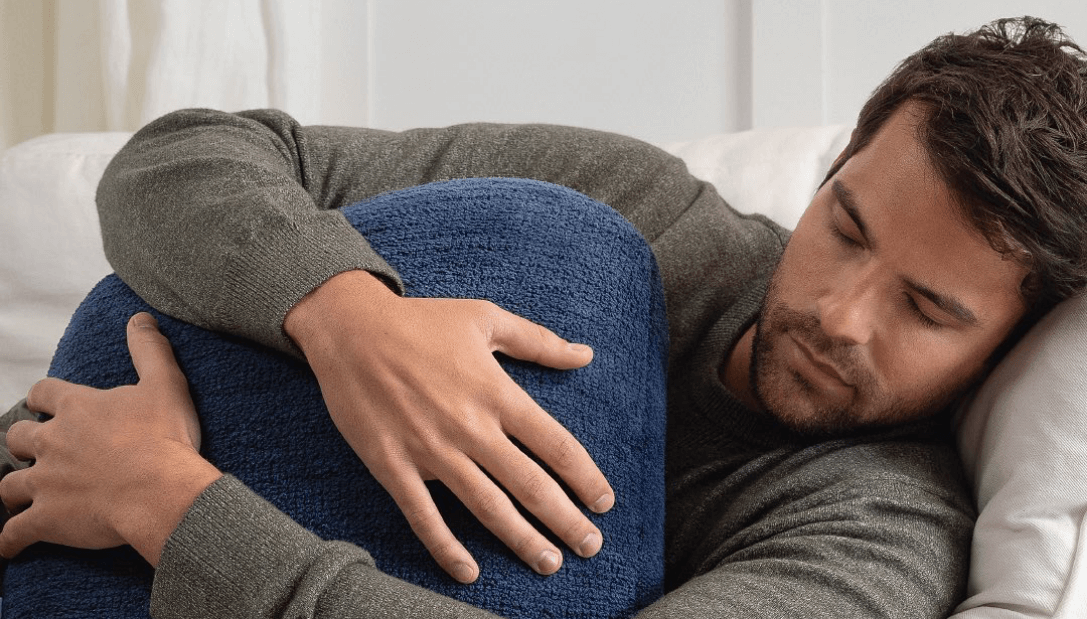
The Psychology Behind Hugging A Pillow While Sleeping
Do you know someone who can’t sleep without hugging a pillow? There’s a fascinating psychology behind this simple act. It all boils down to the fact that we’re social animals, wired for physical and emotional connection. Essentially, hugging a pillow promotes a deep sense of security.
In our fast-paced, often unpredictable lives, feelings of vulnerability and uncertainty can creep in, especially when we’re laying in bed trying to fall asleep. The physical contact of hugging a pillow offers reassurance and reduces anxiety, promoting a sense of safety and allowing us to let go of our worries.
Hugging a pillow during sleep can fulfill our innate need for physical closeness, even when a human touch isn’t available. The pillow creates a connection with something tangible. This connection can be soothing for those who feel isolated or lonely when sleeping alone.
Stress and anxiety have a knack for following us to bed, preventing us from unwinding so we can relax and fall asleep. Hugging a pillow is an effective stress relief technique, helping to dissipate tension while promoting a sense of calm.
But even more than that, the simple act of hugging a pillow triggers the release of endorphins, the feel-good hormones that counteract the adverse effects of anxiety and stress. It’s your body’s natural response that helps to quiet the mind and allows you to enter a more serene state conducive to falling asleep.
The Childhood Connection
Most of us found comfort in hugging a soft object like a teddy bear when we were children. Hugging a pillow can offer similar benefits for both children and adults. Embracing the pillow offers that same sense of safety, familiarity, and emotional support.
Hugging a pillow during sleep as an adult is a physical reminder of the warmth and comfort experienced in childhood. It can help you find solace and relaxation during times stress or anxiety. It connects you to that innermost sense of security and comfort from your formative years.

The Benefits of Hugging a Pillow While You Sleep
What are the benefits of hugging a pillow during sleep? From promoting the release of oxytocin to alleviating stress and enhancing relaxation, here’s how this nurturing practice can improve your sleep quality and emotional well-being while providing physical comfort.
Promote the Release of Oxytocin
Often referred to as the “cuddle hormone,” oxytocin promotes feelings of trust, bonding, and overall happiness. When we hug a pillow, our bodies release oxytocin, creating a cascade of positive effects.
Oxytocin promotes a sense of calm and relaxation and strengthens emotional connections, making us feel more grounded and secure. The release of oxytocin can be particularly beneficial for people experiencing high stress levels, as it counteracts the effects of stress hormones and promotes a more tranquil state of mind.
Decrease Stress and Anxiety Levels
Stress and anxiety have become all too common in today's fast-paced world. Embracing a pillow encourages deep breathing, which activates the body’s relaxation response, reducing the production of stress hormones.
As a result, pillow huggers experience decreased anxiety levels, allowing them to drift off into a more peaceful sleep. If you find yourself tossing and turning, burdened by worries, reaching out for your pillow can help to quiet your mind. Think of it as a drug-free solution for stress and anxiety!
Enhance Relaxation and Sleep Quality
A restful night’s sleep is so vital to our overall well-being, and hugging a pillow can help achieve that. Holding a pillow close creates a cozy, secure environment that promotes deep relaxation.
This physical act signals to your body and mind that it's time to unwind, encouraging a smoother transition into sleep. The comfort and support also promote better sleep posture, ultimately leading to improved sleep quality and more rejuvenating rest.
Promote a Sense of Security and Emotional Comfort
Holding a pillow while you sleep mimics the sensation of being hugged or embracing another person, providing a profound sense of security. This feeling of safety can be exceptionally comforting for those who struggle with loneliness or vulnerability.
Embracing a pillow creates an emotional connection, offering solace and companionship throughout the night. This feeling extends beyond adults and can benefit young children and individuals with conditions like ADHD, providing them with a calmer mind and a sense of grounding.
Encourage Proper Alignment and Support for the Spine
Physical comfort is as important as emotional balance when it comes to getting a good night’s sleep. Hugging a pillow while sleeping can be crucial in promoting proper alignment and support for the spine.
By strategically positioning the pillow, you can maintain the natural curve of your spine, from your neck to your lower back. This alignment can help alleviate pressure on sensitive areas, reducing the risk of waking up with a stiff neck or sore back, and contribute to a more comfortable and pain-free night’s sleep.
Reduce Pressure Points and Joint Pain
If you suffer from joint pain, hugging a pillow can provide relief by reducing pressure points. Hugging the pillow against your body alleviates strain on your joints, particularly in the hips and knees. Embracing the pillow can help distribute your body weight more evenly, which is helpful for pregnant women and those who struggle with arthritis or chronic pain.
choosing the best pillow for hugging during sleep
Now that you’re familiar with the incredible benefits of hugging a pillow while you sleep, you might wonder how to choose the best hugging pillow for this nurturing practice. With many options available, it’s essential to consider factors such as weight, size, shape, firmness, and material.
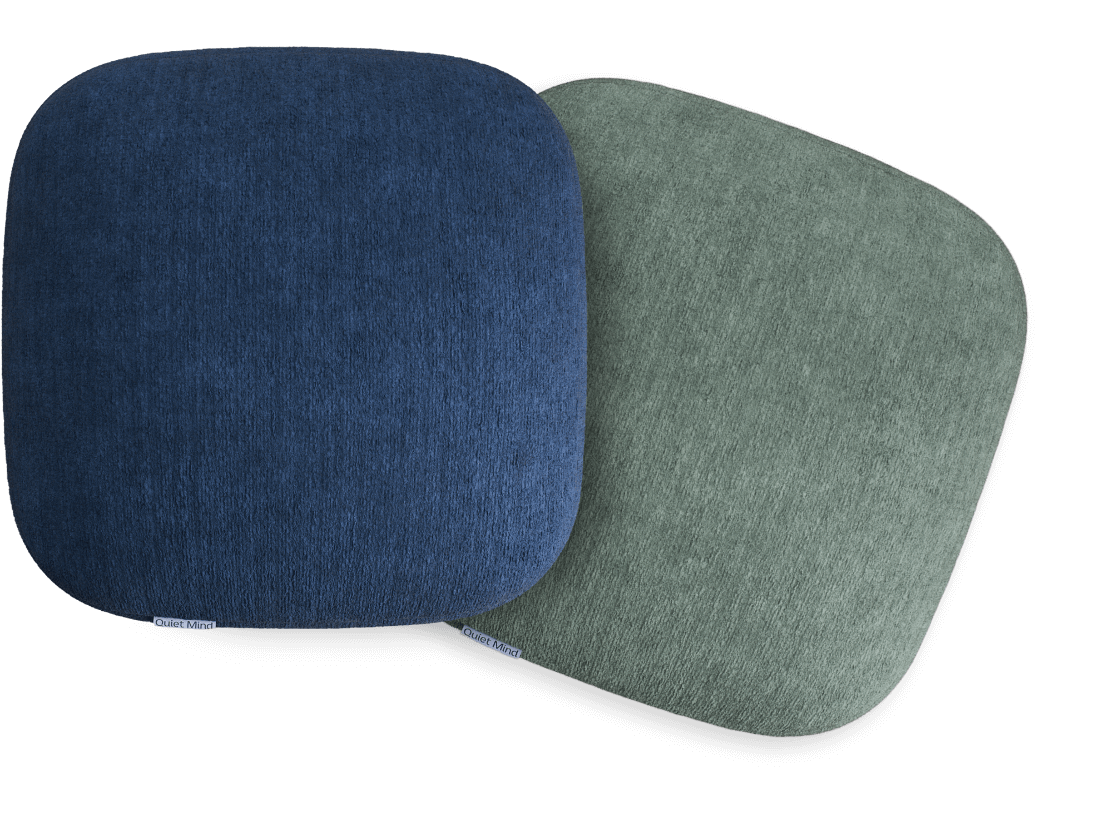
Weight
When holding a pillow during sleep, weight can make a remarkable difference in your overall experience. A weighted pillow designed to provide gentle pressure and a comforting embrace allows your nervous system to go from fight or flight mode to a state of rest and digest.
The added weight provides deep pressure stimulation, similar to the sensation of a soothing hug, promoting a sense of calm and tranquility. It also stimulates the release of melatonin and serotonin while reducing cortisol, allowing your body to unwind and boosting your overall mood.
Size and Shape
The size and shape of the pillow you choose significantly affect how effectively it supports your body and provides comfort. Consider your personal sleeping preferences and lifestyle when making this decision. While you could use a standard-sized pillow or body pillow, we suggest a square pillow that’s the perfect size for your body type and easy to take wherever you go.
Firmness
Finding the right level of firmness in a pillow is crucial for optimal support and comfort. We recommend looking for a pillow that strikes a balance between softness and support. Our weighted pillow is filled with shredded memory foam and recycled glass beads to give it a natural squish, just like a hug or stress ball.
Material
The material of your pillow can impact its overall feel and breathability. Consider your specific needs, such as allergies or temperature regulation, when selecting the material that suits you best. We recommend choosing a pillow with a washable cover made from a breathable fabric.
Best Sleeping Positions For Hugging A Pillow
Your sleeping position can significantly influence how effectively you can enjoy the benefits of hugging a pillow. Now that you’ve found the perfect pillow to hug let’s explore the best sleeping positions to enhance that comforting experience.
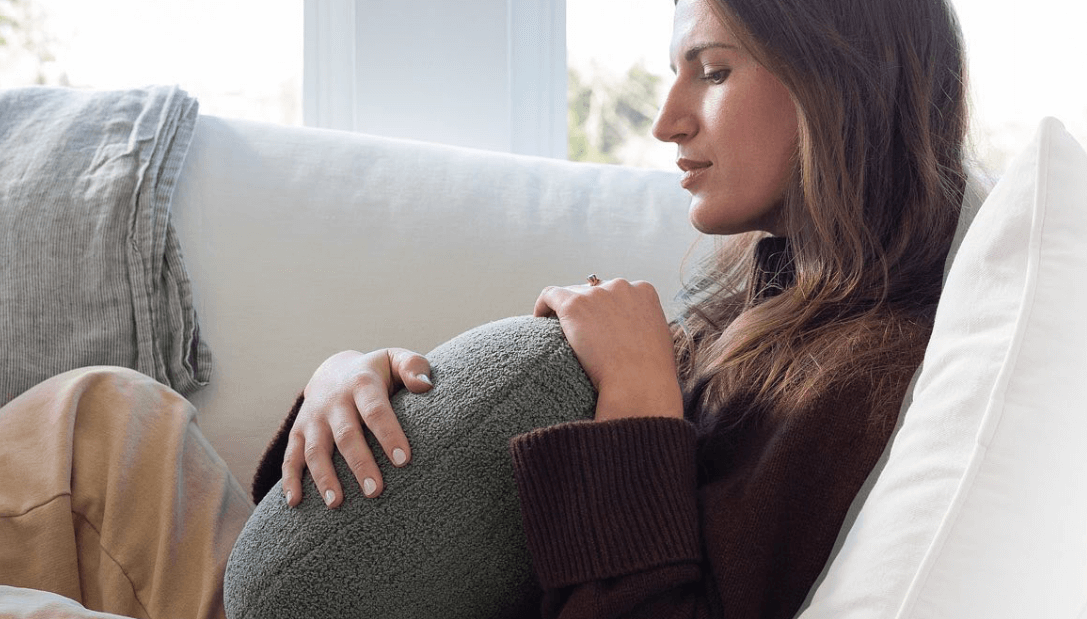
The Side Hug
Side sleeping is one of the most common positions, and it pairs beautifully with hugging a pillow. To assume the side hug position, lie on your side and draw your legs slightly toward your chest. Embrace the pillow with both arms, hugging it against your torso, allowing for a close connection between your body and the pillow.
Side sleepers will enjoy all the psychological benefits of hugging a pillow, along with excellent spinal alignment and support for your neck, shoulders, and hips. It’s particularly beneficial for individuals with snoring issues, obstructive sleep apnea, or acid reflux, as it can keep the airways open and reduce acid reflux symptoms.
The Front Spoon
The front spoon position is a variation of side sleeping that involves hugging the pillow in front of your body. Lie on your side and position the pillow between your arms. Instead of hugging the pillow to your torso, hug it against your chest to create a frontward-facing spoon posture as if you are in the fetal position.
Pillow hugging in the spooning position promotes a sense of security and comfort, mimicking the feeling of being cradled. It’s especially beneficial for individuals who desire additional support for the upper body and prefer a more intimate and snug sleep posture.
The Back Hug
While side sleeping positions are popular, hugging a pillow can also enhance back sleeping. In the back hug position, you’ll lie flat on your back and place the pillow vertically against your chest and stomach. Embrace the pillow with both arms, creating a gentle cradle-like sensation.
This position provides all the psychological benefits of holding a pillow during sleep while maintaining proper spinal alignment. It also reduces the risk of facial wrinkles caused by pressing the face against a pillow during sleep.
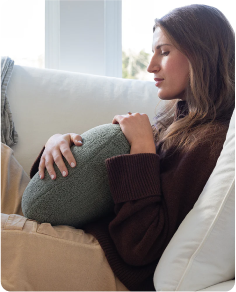
- Daniel R
Wrapping Up
Hugging a pillow while you sleep is a calming and powerful practice that nurtures your emotional well-being. Understanding the psychology behind it and choosing the right pillow and sleeping position can transform your nightly routine.
If you’re ready to experience the life-changing power of holding a pillow during sleep, we encourage you to try the Original Weighted Pillow from Quiet Mind. With three sizes and weights available, our pillow provides the perfect balance of convenience, comfort, and gentle touch pressure to enhance your sleep experience and calm your mind whenever and wherever you need it.
